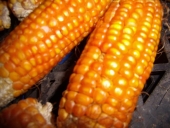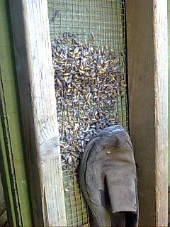Southern Saskatchewan, an hour north of the MT border is my location. The drought has been extreme (likely worst ever) and the high heat is making the situation much worse. Has not been a very pleasant summer. I hate the winter but am starting to look forward to it now!
I have always been water conscious and use greywater to flush my toilet and for watering if extra is available. Water quality issues are becoming just as important as quantity. Water salinity has increased to the point that I am reluctant to use it on my garden and limit its use to high priority crops and and have let others go.
I am perhaps atypical for many on the site because I have nearly 900 acres of land, much of it pasture, which is for the most part not grazed and left as a biodiversity reserve. I also plant a lot of trees, usually several thousand a year but have lost most of my last 2 years of planting, ironically not due to drought but grasshoppers. This is especially unfortunate because a tree that dies of drought still provides information on tree care methods and species suitability for current and future climates. A young tree that is destroyed by grasshoppers before it dies by drought (or not!) is just a loss.
I hope to invest in some water storage projects this fall. However, you can only store surplus water. Digging a hole requires you to wait for that time. The drought is not over and no one really know when it will be. Next week? Next year? Next decade? Who knows. Unfortunately, in my area I think the trend will NOT be our friend. I am preparing the best I can for hotter and drier.
The local cattle producers are eying my pasture longingly and I will likely soon rent some of it for grazing for the income. It is clear that there is far too many cattle on the landscape for its long term health and a herd reduction is needed but governments are determined to prevent that. It is also obvious that in dry landscapes very conservative grazing practices are required. Plant material remaining from years when moisture is more plentiful protects the soils from the heat and conserves moisture for extra growth in the dry years. It has definitely been a challenging year on all fronts.






